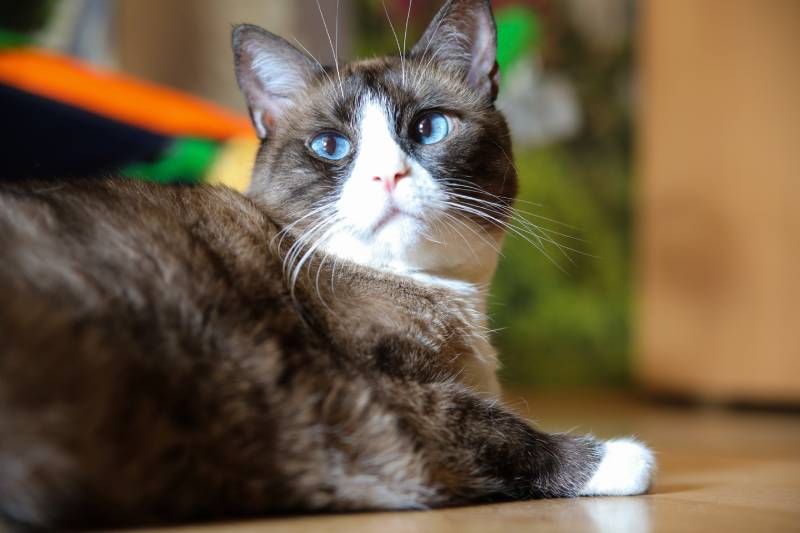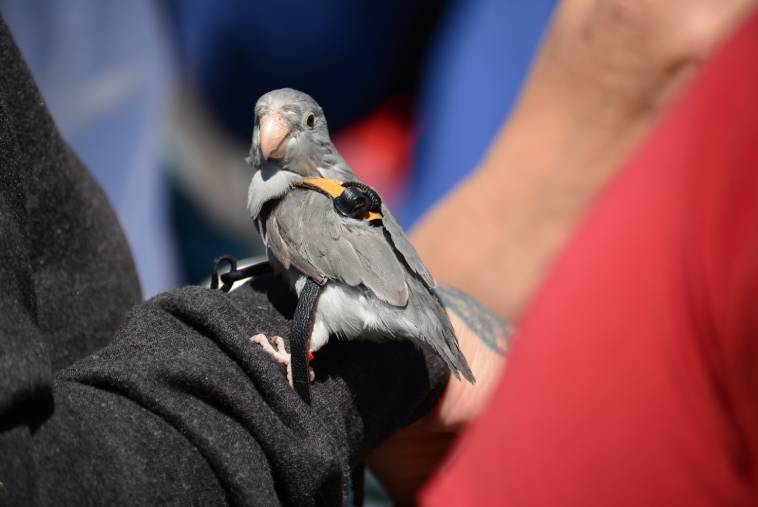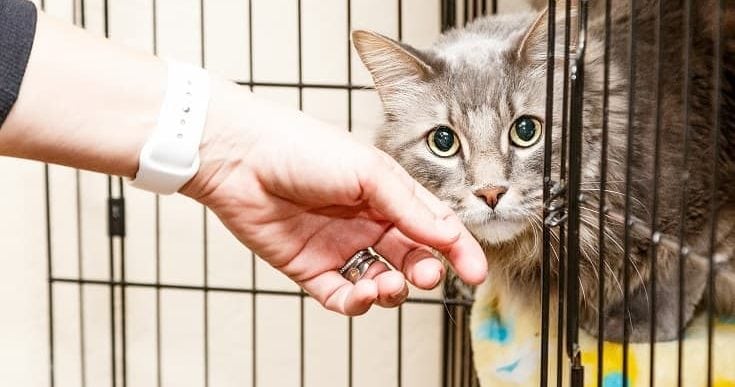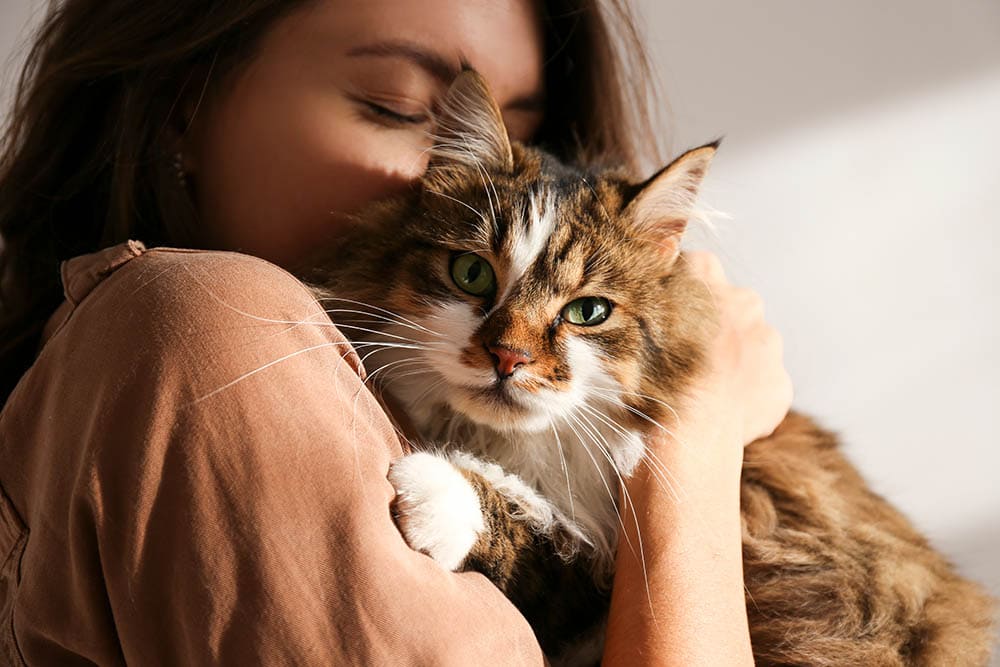VET APPROVED

The information is current and up-to-date in accordance with the latest veterinarian research.
Learn more »Click to Skip Ahead
The beautiful Snowshoe cat was developed in Pennsylvania. Two Siamese cats produced a litter of kittens for Dorothy Hinds Docherty in the 1960s, three of which had four white feet. She bred these kittens with American Shorthair cats with tuxedo markings and started the origins of the Snowshoe cat breed.
The coat of the Snowshoe cat is beautifully marked, and white is the predominant color. These single-coated cats are low-shedders, and their grooming requirements are minimal. However, Snowshoe cats are not hypoallergenic, despite their single coat. No cat is truly hypoallergenic since they all produce and shed varying amounts of proteins that trigger allergies.
While the lower shedding of the Snowshoe may make them more tolerable for people suffering from pet allergies, they still produce the allergen that causes a reaction.

What Causes a Cat Allergy?
Cat allergies are often thought to be caused by cat fur, and single-coated, low-shedding, or hairless breeds are mislabeled as being hypoallergenic. This is a common misconception; people with pet allergies are allergic to certain proteins that can be found in the cat’s saliva, sebaceous glands in the skin, and urine.
Among the eight classified cat allergens that are known to exist, the Fel d 1 protein is the culprit, which is produced primarily in the sebaceous (sebum glands) of the cat. Humans produce a specific antibody to allergens called IgE, and in the case of cat allergens, this antibody is called Fel d 1-specific IgE. In people allergic to cats, this causes an immune response and a histamine release; this process causes the symptoms we associate with allergies.
Cat fur, dander (microscopic dead skin cells), and saliva are what people encounter when interacting with cats. People who are allergic to cats can even get a reaction from an environment a cat has been in due to lingering fur and dander! Breeds like the Snowshoe, which tend to shed less than others, are sometimes mistakenly believed to be hypoallergenic, but unfortunately, no cat breed is truly hypoallergenic.
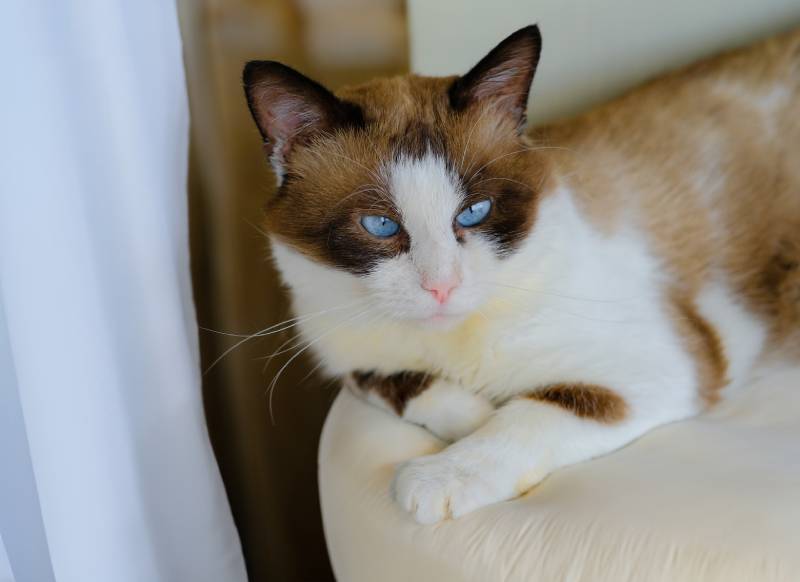
How Do I Know I’m Allergic to My Snowshoe Cat?
If you’ve been reacting to your Snowshoe or their fur, you might wonder whether or not you’re allergic to them. There are different symptoms people can show when suffering from a cat allergy, ranging from mild to severe.
- Red, itchy eyes
- Sneezing
- Running or blocked nose
- Itchy nose
- Cough
- Bronchospasm/asthma
If you suffer from any of these symptoms when in contact with cats, we recommend that you seek advice from your doctor.
The Meaning of Hypoallergenic
Hypoallergenic means “less likely to cause an allergic reaction.” This is different from anallergenic, which means “will not cause an allergic reaction”. This is where some people get confused when looking for cats that are good for allergy sufferers. Snowshoe cats are not hypoallergenic nor anallergenic (no cats are), and they are likely to cause a reaction in those with allergies.
Some breeds shed less of the allergen than others, however. They produce less Fel D 1 protein or shed less dander, making them more friendly for people with cat allergies.
- Sphynx
- Balinese
- Russian Blue
- Bengal
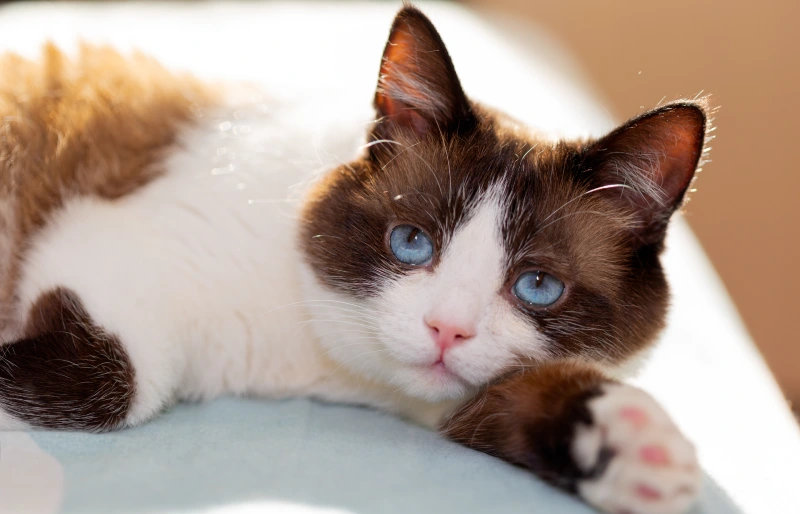
Why Are Snowshoe Cats Not Hypoallergenic?
While they’re beautiful and intelligent cats, Snowshoes can still trigger allergy symptoms in people with cat allergies. Snowshoes shed less fur due to their single coats, but they still shed allergens in fur, dander, and saliva.

Final Thoughts
Snowshoe cats have sleek, single-layered coats without an undercoat, which means they shed less than many other breeds. While this can make cleanup easier, it doesn’t prevent them from producing the proteins responsible for triggering allergic reactions.
The primary cat allergen, Fel d 1, is found in a cat’s dander, fur, and saliva. If you have cat allergies and are considering bringing a cat into your home, it’s important to consult with your doctor first to better understand your specific sensitivities and risks.
- https://www.webmd.com/pets/cats/what-to-know-about-the-snowshoe-cat
- https://www.gccfcats.org/getting-a-cat/choosing/cat-breeds/snowshoe/
- https://www.tica.org/breeds/browse-all-breeds?view=article&id=1817
- https://www.allergyuk.org/resources/cat-allergy-factsheet/
- https://aafa.org/allergies/types-of-allergies/pet-dog-cat-allergies/
- https://www.bluecross.org.uk/advice/cat/hypoallergenic-cats
Featured Image Credit: Aleksandar Nalbantjan, Shutterstock
